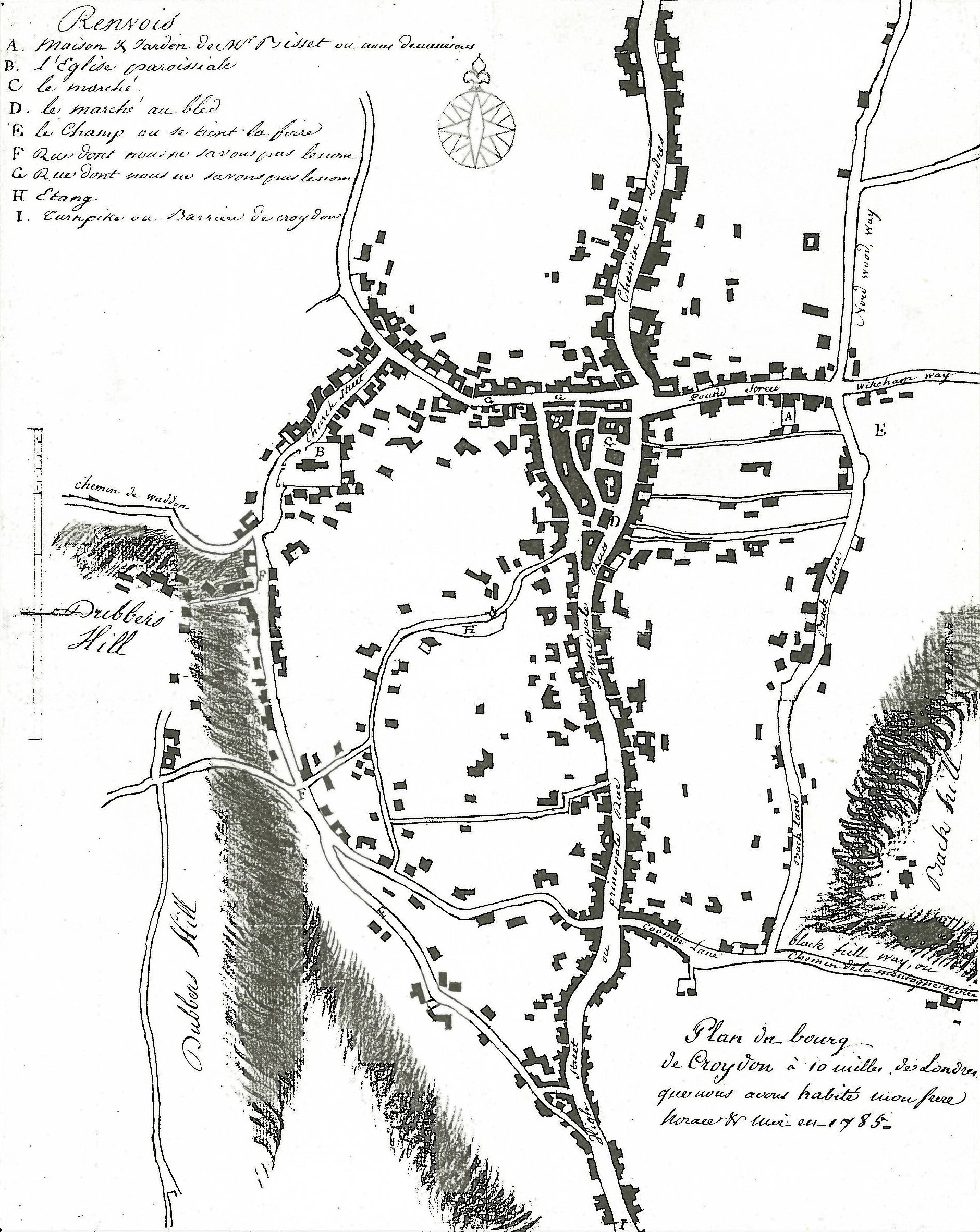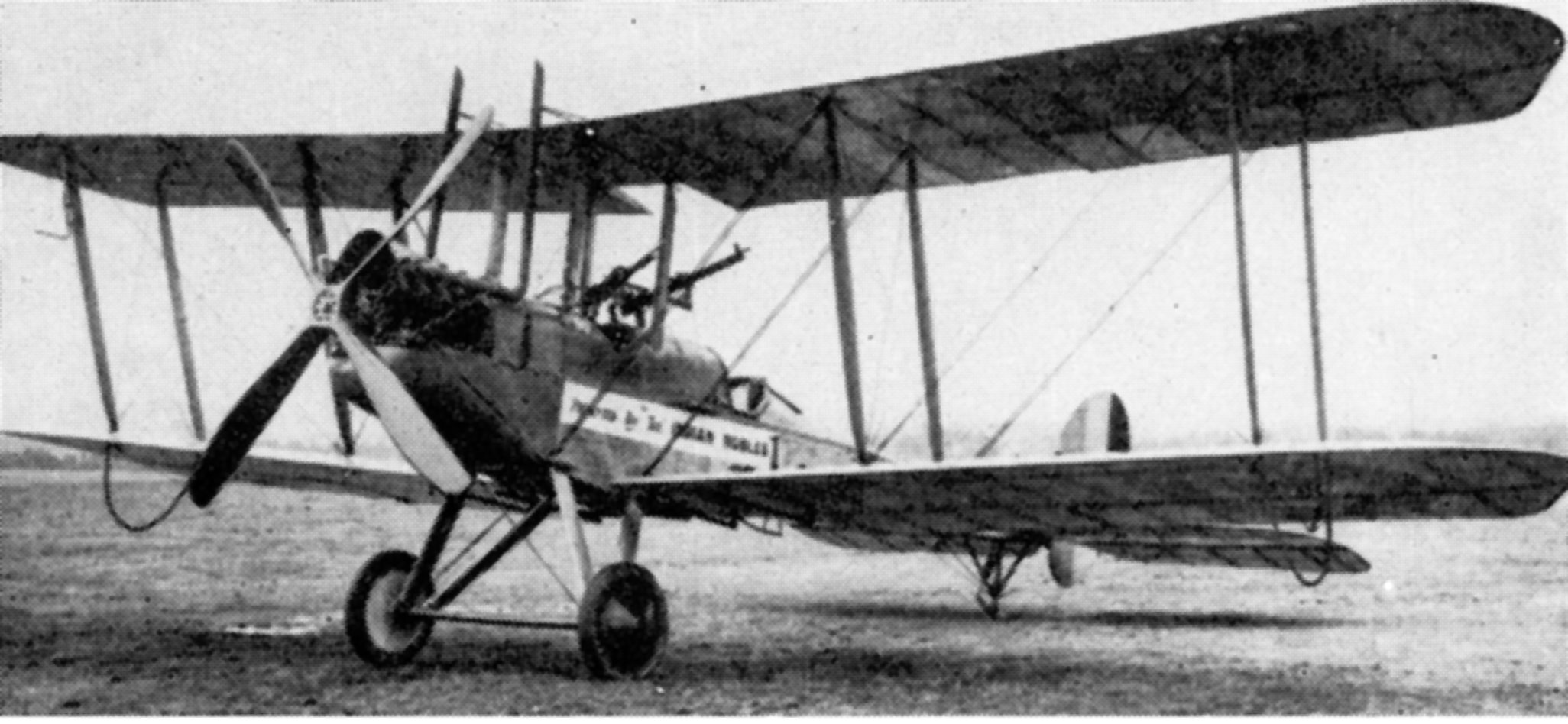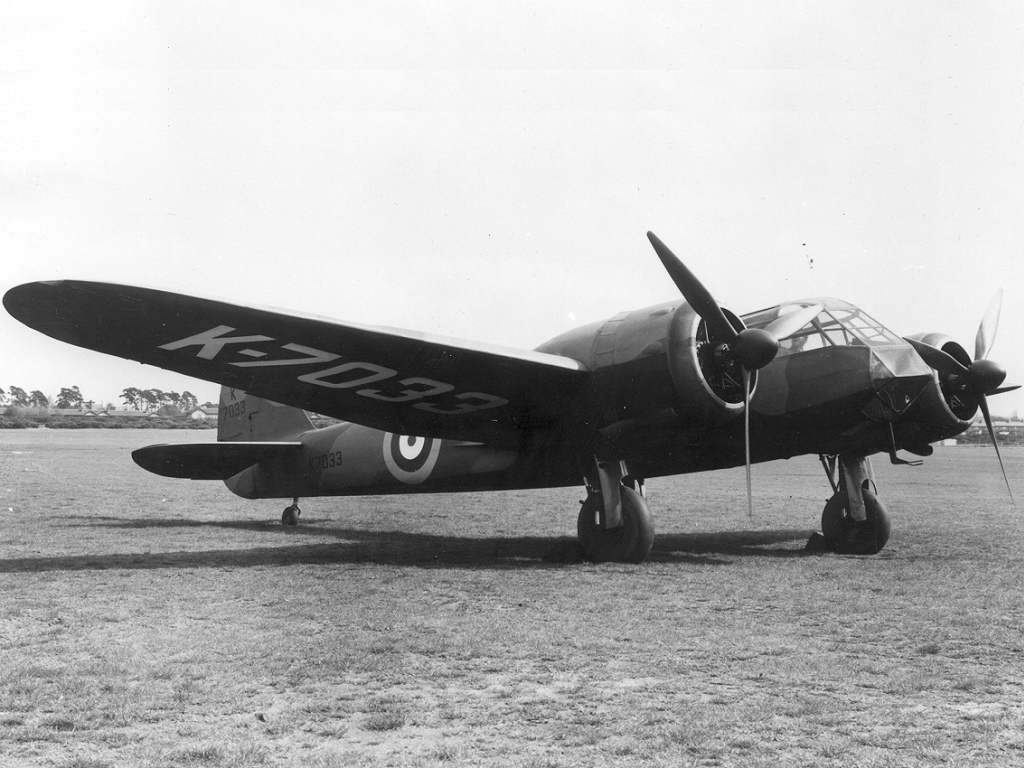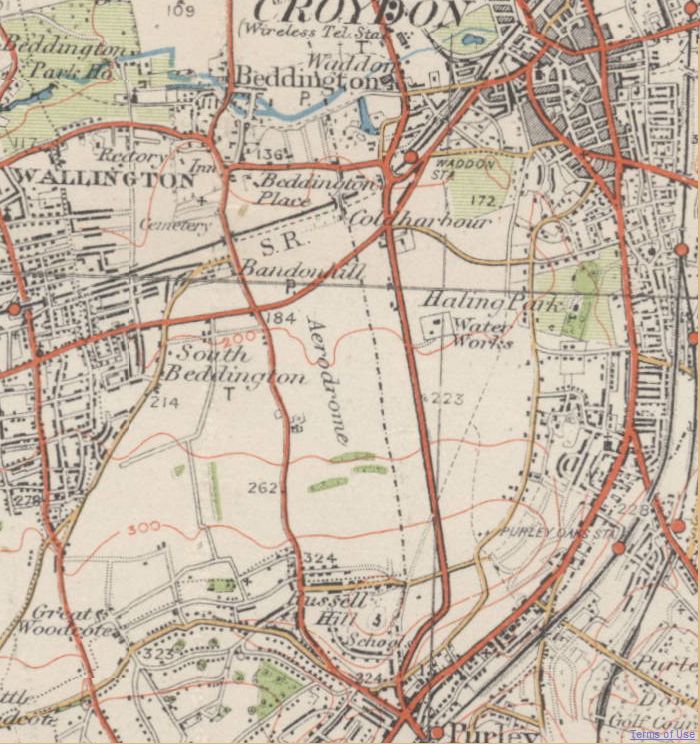|
John Cunningham (RAF Officer)
John 'Cat's Eyes' Cunningham (27 July 1917 – 21 July 2002) was a Royal Air Force (RAF) night fighter ace during the Second World War and a test pilot. During the war, he was nicknamed 'Cat's Eyes' by the British press to explain his success and to avoid communicating the existence of airborne radar to the Germans. Cunningham was born near Croydon Airport, London's main aerodrome. As a teenager, he was keen on entering the aviation industry. Temporarily abiding by his father's wishes for him to avoid the military, he approached the de Havilland company, and was accepted as an engineering candidate. Concurrently, he joined the Royal Auxiliary Air Force (RAuxAF) and became a member of 604 (County of Middlesex) Squadron. Cunningham began his training in August 1935, flew solo in March 1936 and received his wings in 1937. He became an established test pilot, gaining considerable flying time on different aircraft. In August 1939, Cunningham rejoined his squadron, now equip ... [...More Info...] [...Related Items...] OR: [Wikipedia] [Google] [Baidu] |
Croydon
Croydon is a large town in South London, England, south of Charing Cross. Part of the London Borough of Croydon, a Districts of England, local government district of Greater London; it is one of the largest commercial districts in Greater London, with an extensive shopping area. The entire town had a population of 192,064 as of 2011, whilst the wider borough had a population of 384,837. Historically an ancient parish in the Wallington Hundred of Surrey, at the time of the Norman conquest of England Croydon had a church, a mill, and around 365 inhabitants, as recorded in the Domesday Book of 1086. Croydon expanded in the Middle Ages as a market town and a centre for charcoal production, leather tanning and brewing, with the brewing industry in particular remaining strong for hundreds of years. The Surrey Iron Railway from Croydon to Wandsworth opened in 1803 and was an early public railway. Later 19th century railway building facilitated Croydon's growth as a commuter town for L ... [...More Info...] [...Related Items...] OR: [Wikipedia] [Google] [Baidu] |
Night Fighter
A night fighter (later known as all-weather fighter or all-weather interceptor post-Second World War) is a largely historical term for a fighter aircraft, fighter or interceptor aircraft adapted or designed for effective use at night, during periods of adverse meteorological conditions, or in otherwise poor visibility. Such designs were in direct contrast to day fighter, day fighters: fighters and interceptors designed primarily for use during the day or during good weather. The concept of the night fighter was developed and experimented with during the First World War but would not see widespread use until WWII. The term would be supplanted by “all-weather fighter/interceptor” post-WWII, with advancements in various technologies permitting the use of such aircraft in virtually all conditions. During the Second World War, night fighters were either purpose-built night fighter designs, or more commonly, heavy fighters or light bombers adapted for the mission, often employing ... [...More Info...] [...Related Items...] OR: [Wikipedia] [Google] [Baidu] |
Squadron (aviation)
A squadron in an air force, or naval or army aviation service, is a unit comprising a number of military aircraft and their aircrews, usually of the same type, typically with 12 to 24 aircraft, sometimes divided into three or four flights, depending on aircraft type and air force. In most armed forces, two or more squadrons will form a group or a wing. Some military forces (including the United States Air Force, United States Space Force, French Air and Space Force, Royal Air Force, German Air Force, Royal Netherlands Air Force, Belgian Air Component and Republic of Singapore Air Force) also use the term "squadron" for non-flying ground units (e.g. radar squadrons, missile squadrons, air defense squadrons, aircraft maintenance squadrons, security forces squadrons, civil engineering squadrons, range operations squadrons, range management squadrons, weather squadrons, medical squadrons, etc.). Comparative organization Germany In World War I, the Imperial Ge ... [...More Info...] [...Related Items...] OR: [Wikipedia] [Google] [Baidu] |
Jimmy Rawnsley
Flight Lieutenant Cecil Frederick "Jimmy" Rawnsley (16 March 1904 – 12 February 1965) was a Royal Air Force night fighter observer radar operator and gunner during the Second World War. He flew many of his sorties with John "Cat's Eyes" Cunningham who was credited with 20 kills, of which 19 were claimed at night, and 17 of which were achieved with Rawnsley. Second World War Rawnsley initially served as an air-gunner but retrained to become a navigator/radar operator and was sent to No. 604 Squadron RAF flying Beaufighters. Using the new aircraft interception (AI) radar equipment (an early form of airborne radar). Using this tracking device at night, Rawnsley was able to guide Cunningham onto targets. Their first confirmed "kill" came on the night of 19–20 November 1940, when they downed a German Junkers Ju 88 bomber over Oxfordshire. On 4 April 1941 he was awarded a Distinguished Flying Medal (DFM), to which he added a Bar on 23 May of the same year. Later that year, he ... [...More Info...] [...Related Items...] OR: [Wikipedia] [Google] [Baidu] |
Bristol Blenheim
The Bristol Blenheim is a British light bomber designed and built by the Bristol Aeroplane Company, which was used extensively in the first two years of the Second World War, with examples still being used as trainers until the end of the war. Development began with the ''Type 142'', a civil airliner, after a challenge from the newspaper proprietor Harold Harmsworth, 1st Viscount Rothermere, Lord Rothermere to produce the fastest commercial aircraft in Europe. The ''Type 142'' first flew in April 1935, and the Air Ministry, ordered a modified design as the ''Type 142M'' for the Royal Air Force (RAF) as a bomber. Deliveries of the new Blenheim to RAF squadrons commenced on 10 March 1937. In service the Type 142M became the Blenheim Mk.I which would be developed into the long-nosed Type 149, the Blenheim Mk.IV, except in Canada where Fairchild Canada built the Type 149 under licence as the Bolingbroke. The Type 160 Bisley was also developed from the Blenheim but was already obsol ... [...More Info...] [...Related Items...] OR: [Wikipedia] [Google] [Baidu] |
List Of Royal Air Force Aircraft Squadrons
Squadrons are the main form of flying unit of the Royal Air Force (RAF). These include Royal Flying Corps (RFC) and Royal Naval Air Service (RNAS) squadrons incorporated into the RAF when it was formed on 1 April 1918, during the First World War. Other squadrons of the RAF include those from Commonwealth air forces which have served within the RAF structure and squadrons of the Fleet Air Arm before it transferred to the Royal Navy in 1939. Some squadrons have an individual tradition of presenting their squadron number in Roman numerals or using a suffix to their squadron number (such as "(F)" for "Fighter", "(B)" for "Bomber" or "(AC)" for "Army Co-operation") to indicate a past or present role. An example would be No. 18 (Bomber) Squadron RAF which currently actually operates the heavy-lift Chinook helicopter. However, these practices have, at least in the past, been deprecated at higher levels and generally only apply to certain squadrons with long traditions, especially t ... [...More Info...] [...Related Items...] OR: [Wikipedia] [Google] [Baidu] |
Aircrew Brevet
An aircrew flying badge (unofficially and incorrectly known as an aircrew brevet – which is actually French for a diploma or certificate) is the badge worn on the left breast, above any medal ribbons, by qualified aircrew in the Royal Air Force, Royal Navy, British Army, Indian Air Force, Pakistan Air Force, Royal Canadian Air Force, Royal Australian Navy, Australian Army, Royal Australian Air Force, Royal New Zealand Air Force, South African Air Force and Sri Lanka Air Force. An example of a real pilot brevet (i.e. certificate) is shown: United Kingdom Royal Air Force In the Royal Air Force, RAF, the Flying Badge (colloquially referred to as wings), is awarded upon the completion of a significant stage of Military Flying Training System, flying training. Aircrew first undertake Elementary Flying Training, and are then streamed to either fast jet, helicopter, RPAS or multi-engine pipelines. The award of wings usually occurs upon completion of the secondary phase of training ... [...More Info...] [...Related Items...] OR: [Wikipedia] [Google] [Baidu] |
1935 In Aviation
This is a list of aviation-related events from 1935: Events * Employing aerial refueling, a sustained flight record of 653 hours 34 minutes (27 days, 5 hours, 34 minutes) is set by brothers Al and Fred Key of Meridian, Mississippi. It remains unbroken. * Consolidated Aircraft Corporation moves from Buffalo, New York, to San Diego, California. * Imperial Japanese Navy dive bombers practice against a full-size mock-up of the United States Navy aircraft carrier ''Saratoga'' (CV-3) at the Kashima bombing range. * Pan American World Airways builds a seaplane base for its transpacific China Clipper flying boats on Sand Island at Midway Atoll. * The Soviet Union has the largest bomber force in the world. * The Kalinin K-7 programme ends with the construction of only one K-7, which had been lost in 1933. The end of the programme brings the cancellation of the construction of two additional K-7s. * The United States Army places a rotary-wing aircraft in serv ... [...More Info...] [...Related Items...] OR: [Wikipedia] [Google] [Baidu] |
De Havilland
The de Havilland Aircraft Company Limited (pronounced , ) was a British aviation manufacturer established in late 1920 by Geoffrey de Havilland at Stag Lane Aerodrome Edgware on the outskirts of North London. Operations were later moved to Hatfield in Hertfordshire. Known for its innovation, de Havilland was responsible for a number of important aircraft, including the Moth biplane which revolutionised aviation in the 1920s; the 1930s Fox Moth, a commercial light passenger aircraft; the wooden World War II Mosquito multirole aircraft; and the pioneering passenger jet airliner Comet. The de Havilland company became a member of the Hawker Siddeley group in 1960, but lost its separate identity in 1963. Later, Hawker Siddeley merged into what is eventually known today as BAE Systems, the British aerospace and defence business. The de Havilland name lives on in de Havilland Canada, which owns the rights to the name and the aircraft produced by de Havilland's former Canadian ... [...More Info...] [...Related Items...] OR: [Wikipedia] [Google] [Baidu] |
British Armed Forces
The British Armed Forces are the unified military, military forces responsible for the defence of the United Kingdom, its British Overseas Territories, Overseas Territories and the Crown Dependencies. They also promote the UK's wider interests, support international peacekeeping efforts and provide humanitarian aid. The force is also known as His Majesty's Armed Forces. Since the formation of the united Kingdom of Great Britain in 1707 (later succeeded by the United Kingdom of Great Britain and Ireland, and finally by the United Kingdom of Great Britain and Northern Ireland), the British Armed Forces have seen action in most major wars involving the world's great powers, including the Seven Years' War, the American Revolutionary War, American War of Independence, the Napoleonic Wars, the Crimean War, the First World War and the Second World War. Britain's victories in most of these wars allowed it to influence world events and establish itself as one of the world's leading mili ... [...More Info...] [...Related Items...] OR: [Wikipedia] [Google] [Baidu] |
Aerospace Industry In The United Kingdom
Aerospace is a term used to collectively refer to the atmosphere and outer space. Aerospace activity is very diverse, with a multitude of commercial, industrial, and military applications. Aerospace engineering consists of aeronautics and astronautics. Aerospace organizations research, design, manufacture, operate, maintain, and repair both aircraft and spacecraft. The border between space and the atmosphere has been proposed as above the ground according to the physical explanation that the air density is too low for a lifting body to generate meaningful lift force without exceeding orbital velocity. This border has been called the Kármán line. Overview In most industrial countries, the aerospace industry is a co-operation of the public and private sectors. For example, several states have a civilian space program funded by the government, such as National Aeronautics and Space Administration in the United States, European Space Agency in Europe, the Canadian Space Agenc ... [...More Info...] [...Related Items...] OR: [Wikipedia] [Google] [Baidu] |
Croydon Airport
Croydon Airport was the UK's only international airport during the interwar period. It opened in 1920, located near Croydon, then part of Surrey. Built in a Neoclassical architecture, Neoclassical style, it was developed as Britain's main airport, handling more cargo, mail, and passengers than any other UK airport at the time. Innovations at the site included the world's first air traffic control, the first airport terminal and the world's first airport hotel (the Gate Lodge, now the Aerodrome Hotel ). It was home to Britain's first national airline, Imperial Airways, founded through a government sponsored four-airline merger in 1924. During World War II the airport was named Royal Air Force, RAF Croydon as its role changed to that of a Fighter aircraft, fighter airfield during the Battle of Britain; and in 1943 RAF Transport Command was founded at the site, which used the airport to transport thousands of troops into and out of Europe. After the Second World War, its role re ... [...More Info...] [...Related Items...] OR: [Wikipedia] [Google] [Baidu] |







